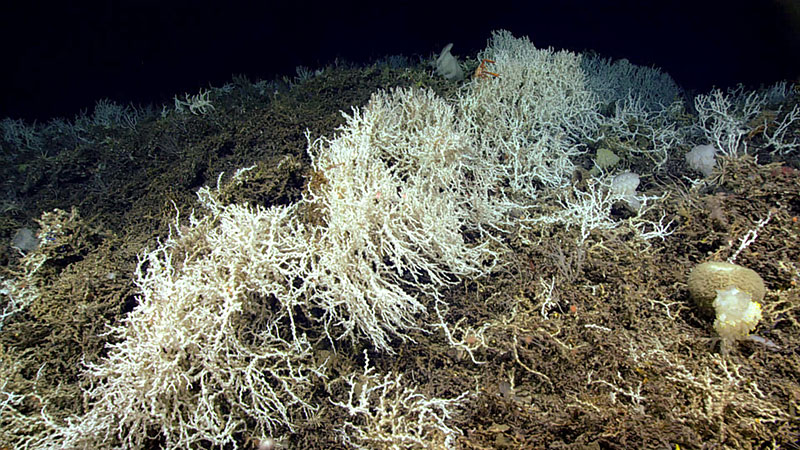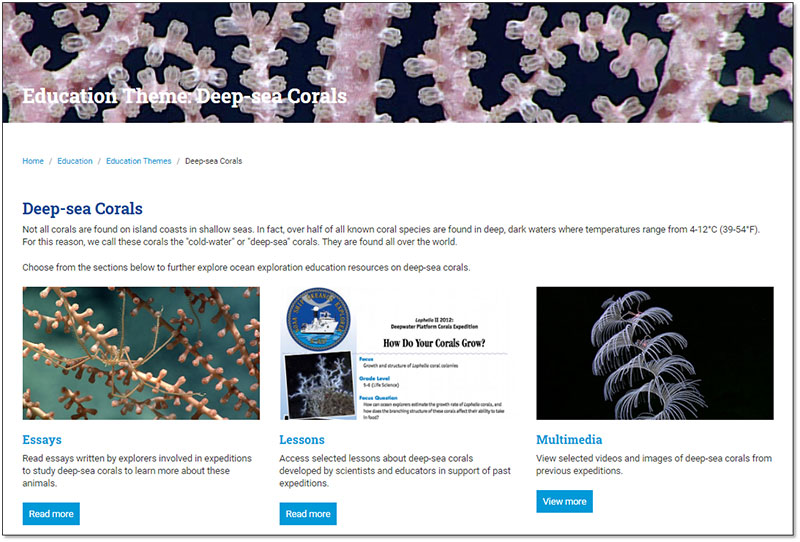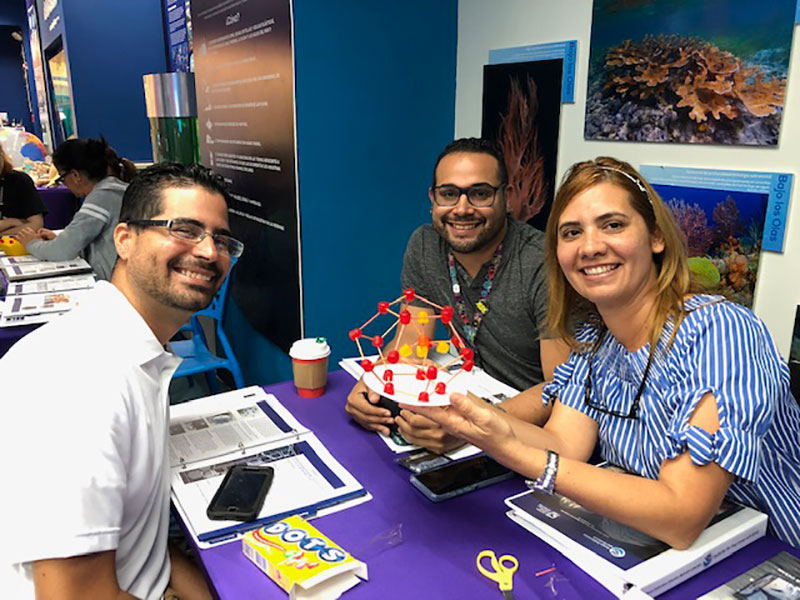
by Debi Blaney, NOAA Office of Ocean Exploration and Research
November 14, 2019

In this illustration, remotely operated vehicles Deep Discoverer and Seirios explore the seafloor and water column. Illustration courtesy of Christine Machinski. Download larger version (jpg, 4.4 MB).
What does the seafloor look like in different parts of the world? What kind of life can be found in deep, cold waters where sunlight does not reach? If you have been following along with our expeditions, you know that almost every time we dive, we find something new and unexpected. There is always something new to learn. Through powerful cameras and lights on our remotely operated vehicles, a completely unknown world reveals itself to us, and our current 2019 Southeastern U.S. Deep-sea Exploration expedition is no exception.
For example, our scientists described the dive on November 6 as “phenomenal” and “historic.” During this dive, we encountered two live Lophelia coral reefs on the Blake Plateau. Deep-sea corals, also known as cold-water corals, have been around for millions of years and are globally distributed. They provide important habitats for numerous species, so the documentation of this new biological hotspot is a valuable contribution to science.

This Lophelia pertusa deep-sea coral reef was seen on Dive 06 of the 2019 Southeastern U.S. Deep-sea Exploration. Image courtesy of the NOAA Office of Ocean Exploration and Research, 2019 Southeastern U.S. Deep-sea Exploration. Download larger version (jpg, 1.9 MB).
This expedition and others offer unique opportunities for explorers of all ages to experience deep-sea exploration in real time through our live streams. By allowing them to share in the wonder of discovery and the fascination of science in action, we hope to inspire interest and curiosity in young minds for STEM (science, technology, engineering and mathematics) education and STEM careers.
In addition to live streaming our deep-sea dives, we create expedition education modules with links to relevant educational materials for each of our individual expeditions. Are you an educator who wants to share more information about these newly discovered Lophelia corals with your students and include relevant hands-on activities in your lesson? You are in luck. Given the importance of these corals to the expedition, the expedition education module for the 2019 Southeastern U.S. Deep-sea Exploration includes a link to a coral theme page that features a variety of resources and lesson plans on deep-sea corals.

This screenshot of the Deep-sea Corals theme page is just one example of the many educational resources available on the NOAA Office of Ocean Exploration and Research’s education web presence. Download larger version (jpg, 508 KB).
The NOAA Office of Ocean Exploration and Research’s education web presence includes a wide variety of teacher resources. Lessons, hands-on activities, images and videos, and theme pages are all aligned with our expeditions and with today’s learning standards. Our educational materials are created to help formal and informal educators teach their students about STEM subjects such as ocean science, seafloor mapping, and engineering and technology development and get these students interested in careers in ocean exploration. In addition, the office offers free in-person professional development workshops across the country to show educators how to teach ocean science and exploration technology in 21st century classrooms, including incorporating information about what we learned during our recent expeditions.
With the vast and global expansion of technology, STEM education is more important now than ever before. The next generation of scientists and engineers is needed to fuel the future of innovation. Not only is the majority of our ocean thus far unexplored, but there are also other unexplored ocean worlds in our solar system (and beyond), and they may also harbor life. Whether we explore Earth’s ocean or other ocean worlds, it’s today’s students who will be doing the exploring and innovating, pushing the boundaries of human knowledge and technological accomplishments.

During a professional development workshop in San Juan, Puerto Rico, educators built a model of methane hydrate as an example of a hands-on-activity designed for the classroom. Image courtesy of the NOAA Office of Ocean Exploration and Research. Download larger version (jpg, 300 KB).
What is deemed science fiction today paints a picture of the careers of tomorrow. So, educators, please join us live with your students during the remaining dives of this expedition (and during future expeditions), attend a professional development workshop, and use our educational materials and resources to enhance your STEM teaching. Also, to stay in touch and keep current with our education updates, connect with our Education Team on Facebook .